Open-air ruins tell the tale of ancient animosity
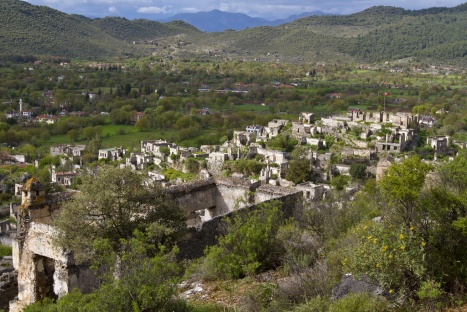 | | View of the valley from within the abandoned village on the hill. | | 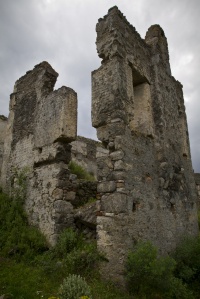 | | Ruins in Kayaköy. | |
Story and photos by Garrett Palm
Mid-April is still the off-season in Kayaköy, Turkey so my friend and I had the Greek ruins almost to ourselves. Nearby the towns prepared for the oncoming wave of British summer homeowners. For now the “Beatles Bar,” Indian restaurants, night clubs, and Turkish cafes advertising full English breakfasts were closed.
After you pass through mini-Britain you come to a lush valley among the mountains on a peninsula on the Anatolian Coast. Across the green, working farms of the valley is a slope of grey buildings, the abandoned Greek village. After seeing centuries- and millennia-old ruins around Turkey, this abandoned village less than a hundred years old had a familiar eeriness. The storm coming in from the Mediterranean heightened the end of the world atmosphere.
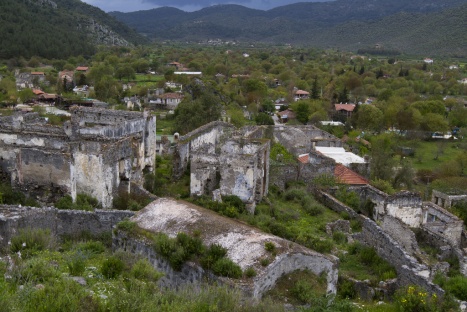 |
| Abandoned homes of former Greek Orthodox residents of Kayaköy mingle with newer homes of Turkish residents, reflecting the tortured history of the area. |
After the war between Turkey and Greece ended in 1922 the two countries agreed to a population exchange. Approximately 2,000 Greek Orthodox living in Kayaköy were forcibly repopulated to Greece. Ethnicity was not the deciding factor in the exchange of population between Greece and Turkey, just religion. The treaty involved 2,000,000 people, around 1,500,000 Christians in Turkey and 500,000 Muslims in Greece. Most people fled before the treaty took effect, however. Kayaköy’s Greeks were forced to march from the only home they knew to the nearby port of Fethiye and move to Crete.
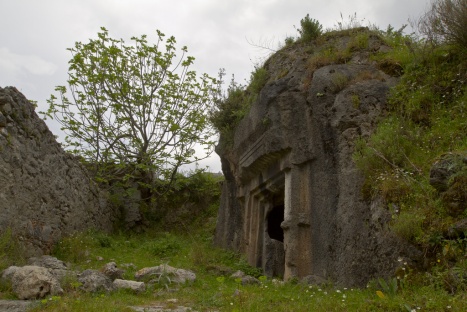 |
| Entrance to a cave in the abandoned Greek village in Kayaköy. |
When the Muslims from Greece were moved to Kayaköy they were unwilling to live in formerly Christian homes, so the village was left abandoned. An earthquake in 1957 finished off the village and turned it from a ghost town into uninhabitable ruins. Now it is a Turkish government protected open-air museum. Craftsmen and cafes sit across the road from the ruins, and some of the bigger buildings at the bottom of the slope have been rebuilt and turned into wineries and restaurants.
As the storm opened up my friend and I watched a shepherd herd his sheep from the ruins back to his farm. We climbed down to one of the converted restaurants and ate an elegant dinner surrounded by the grey remains of destroyed homes.
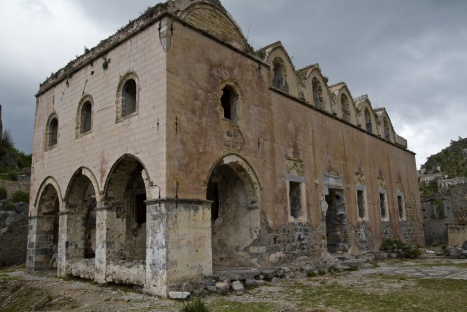 | | The abandoned Greek Orthodox church in Kayaköy. | |
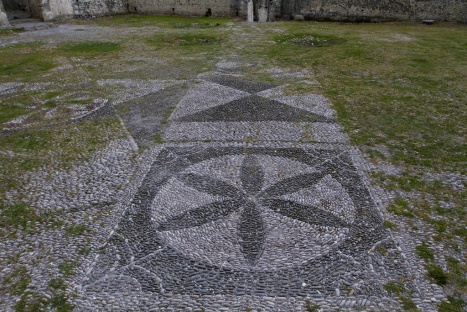 | | Tiles in the courtyard of the abandoned Greek Orthodox church in Kayaköy. | |
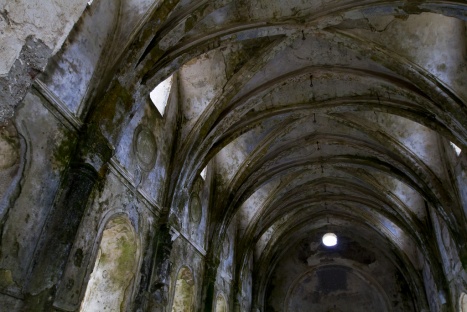 | | Echoes of Greek orthodoxy in the abandoned church. | |
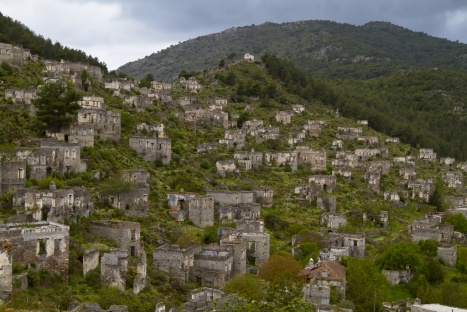 | | Ghost town. | |
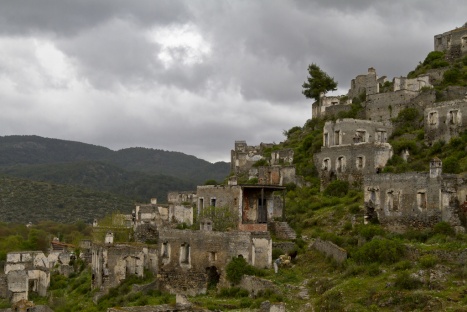 | | Stone houses built to last for generations now stand empty in Kayaköy. | |
Summit County Citizens Voice









